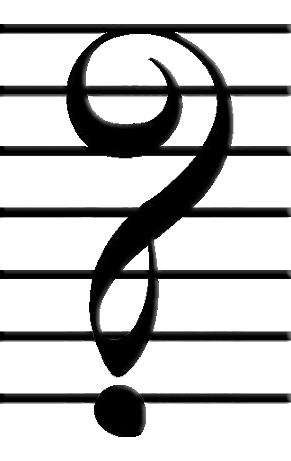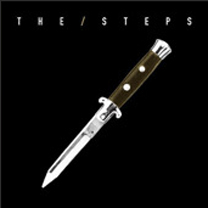I’ve been enjoying a musical conversation that I’ve been having with my father that has spanned the better part of four decades This conversation has assumed numerous directions, been carried with words and with music, and though it has been conveyed through countless instruments over a gamut of styles and genres, Bluegrass and the acoustic guitar have always been what I call ‘home’. Over the course of this conversation with my father, I would have to say that it hasn’t been until about the last year or so that I could say I’ve really ‘gotten’ the meaning of it all–or am getting to the meaning of it all. Perhaps this would be a good point to mention that my father died in April of 2010, but it doesn’t seem to have put a stop to the conversation; in fact, in some ways things seem to ramped-up a bit. I know it sounds strange, but trust me, it isn’t.
Growing up, I was fortunate to have been exposed to a great deal of live music–my father spent a good chunk of his free-time playing guitar in a couple of different bands that I remember. He was a fantastic musician, and I would venture to refer to him more as a guitarist than a guitar player–it’s a subtle distinction and some use the descriptions interchangeably, but not me. He could play a dozen different instruments proficiently enough to “play along” with a group, but I’m certain he felt most comfortable on the guitar. There were guitars that came and went in our house–some with six strings, some with twelve (an eight string guitar may have even stayed with us for a short time)–but the one that stuck around until the bitter end was Dad’s Martin D-76.
Looked upon as something of a novelty, the Martin D-76 was a produced to commemorate the U.S. bicentennial, and it was a limited edition with only 1,976. For the most part, the D-76 did not sell well primarily because of quality control issues that had plagued the preceding years. The guitars had lost their sense of hand-built quality, and the D-76 was a limited edition that attempted to draw consumers back to the brand; unfortunately they didn’t sell out of them until 1978. Fortunately, Dad got one, and fortunately they just happen to be good guitars.
As a kid, touching the guitar wasn’t exactly verboten, but it definitely wasn’t encouraged either, and let’s just say that I’m thankful that Dad never saw me doing my Pete Townsend-style windmill strumming technique on his Martin; I might not be writing this post today.
I started off on the ukulele, and played that for a while, but yearned to graduate to a tier-one instrument. An uncle gave me a banjo and I played it for a time, but all I could muster were some basic techniques that, to this day, I have not moved beyond. My dad always modestly said that he played guitar so that he could hang out with real musicians, and when a college roommate of mine brought a guitar to school with him, I jumped at the chance to learn, and the couple of chords that I did know bloomed into a laborious, self-directed study of the instrument. By the next Christmas, I had my own guitar and was free to play as often as I liked.
Many of the ‘guitar-related’ behaviors I saw in my dad as I was growing-up that I never understood now began to make sense. Tuning the guitar was always a fun thing to watch Dad do: He would go to that far-off place–not a physical place, but a mental place–with his eyes down-cast, looking at nothing and hearing something that only he could hear. He could feel that sweet spot between sharp and flat like no one else and if he were playing with someone even the slightest bit out of tune, he would search you out in a crowd to share a funny look, like an inside joke (at my house, whistling out of tune–so long as it was on purpose–was high comedy). I guess I caught the same bug; sometimes I take so long to tune-up that I don’t have enough time to play.
Despite the fact that he would always say his tuning was, “close enough for bluegrass”, he taught me that there should be some respect paid to and some care taken with the harmonic relationship between strings, and further, the relationship between the instruments.
Dad also taught me that, if you were going to play, you play like you mean it. You didn’t have to play with him very much to hear him tell you to play it or sing it louder. He played with a heavy right hand, and over the years, nearly dug a hole in the spruce top where his pick would come down just above the top E string, something that was thankfully left untouched when the guitar was sent back to Martin 10 or 15 years ago for a factory reset.
The arc of my own musical interests has run the gamut, but live, imperfect music has always been at the core, and though I ranged-off into electric territory, I always came back to the acoustic guitar, and really eventually back home to bluegrass. Perhaps it was my own maturity level, but there was something restorative about bluegrass. I could identify with ‘the old home place’, having moved away from it, and pining to get back to it one way or the other, in one form or another.
I watched him for years, studied his mannerisms, and saw how connected he was to this guitar and how capable he was with it. That’s why it was so tough, 3 months after he’d been diagnosed with inoperable cancer, to see him toting this guitar through the airport on his last trip to Phoenix before he died. Unless you’ve experienced it, I guess you don’t know how you’ll act, but I had been whistling past the graveyard for 3 months and in that moment, everything became quite real, and I knew instantly what that scene meant. He told me that, “It was always your guitar anyway.”
Not feeling especially worthy of playing such an instrument and partially due to some degree of grief I’m sure, it took me a while before I felt completely comfortable with the idea that I was now the guitar’s steward. After a couple of months, I had Bob Colosi make me a set of bridge pins, nut, and compensated saddle–all out of bone–to replace the original plastic ones that Martin put on the guitar and that my father so detested. I then had the guys at Guitar Electronics (don’t let the name fool you) do the fitting, shaping and installation. It wasn’t until I had added these touches and actually improved upon the original sound that I felt like the guitar was mine. I even solved the difficult B string tuning problem with the compensated saddle which Dad probably wished he had done too.
It’s funny to me how I kind of chuckled at my dad for the amount of time he spent trying to get his guitar in-tune, and only later realized why. With a fine instrument, the tones are so much more well-defined and you can hear that relationship between that the strings that I talked about earlier much more clearly. Also with a fine instrument, the woods used in the guitar are much more superior conductors of sound vibration, so not only can you hear it, but you can feel it as well. It is hard to convey this in words, but suffice it to say that I’ve played for nearly 20 years, and this was an epiphany for me.
I found myself doing many of those things I observed my father doing over all of those years, and I found that things that I did not understand had begun to become clear. Sometimes, it is as though we are playing the same guitar and I find myself chuckling over one of those old inside jokes–almost like I’m still carrying-on a conversation with my father, even since his death.
My daughter will have forgotten her grandfather–she was not yet 2 when he died–and my son was born 2 weeks after his death, so the one real tangible thing I can share with them about an extremely vital aspect of my father’s life is locked away in that guitar, and the only difficulty will be for me to coax it out for them to “see” for themselves. I really do feel that I’m more of a steward than an owner of this guitar, and perhaps one day I can tell one of my kids that the guitar has always belonged to them anyway.
Now, if those kids would just keep it down so I could tune-up.
Filed under: Live Music Resources, Pop Culture Opinions | Tagged: acoustic guitar, Anthem AZ, Anthem AZ real estate, Arizona music blogs, arizona premiere living, arizona premiere music, bluegrass, live music, living in Arizona, martin d 76, music, music blogs, phoenix real estate | 3 Comments »








 First let me say that it’s been a while since I’ve reviewed any music, let alone, The Dead, but I recently listened to a really hot show–one that intend to review soon. This show really catches this band in their prime, but in order to define ‘prime’ it is important to note that The Dead had several primes, and this just happens to be one of them.
First let me say that it’s been a while since I’ve reviewed any music, let alone, The Dead, but I recently listened to a really hot show–one that intend to review soon. This show really catches this band in their prime, but in order to define ‘prime’ it is important to note that The Dead had several primes, and this just happens to be one of them.



